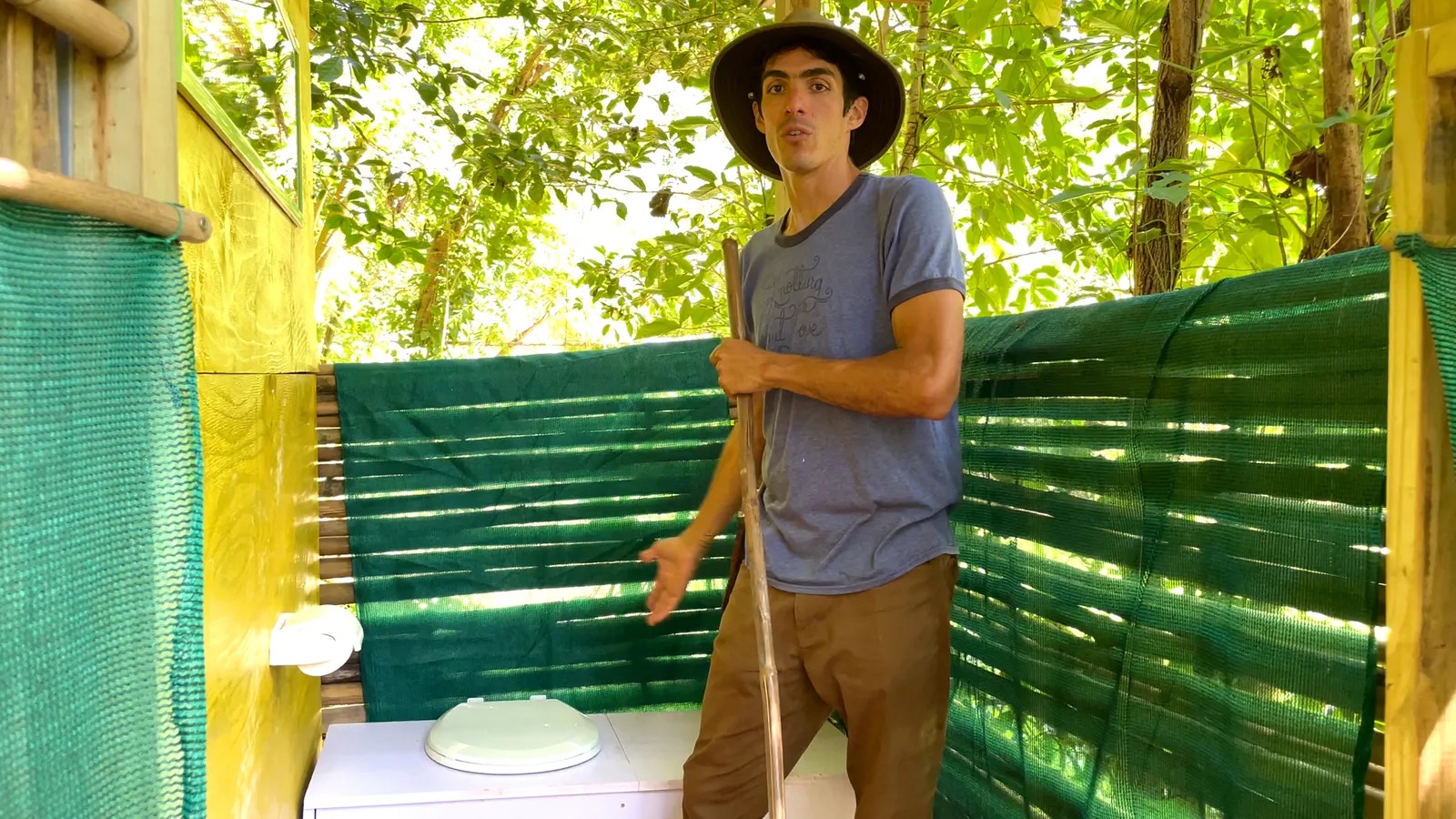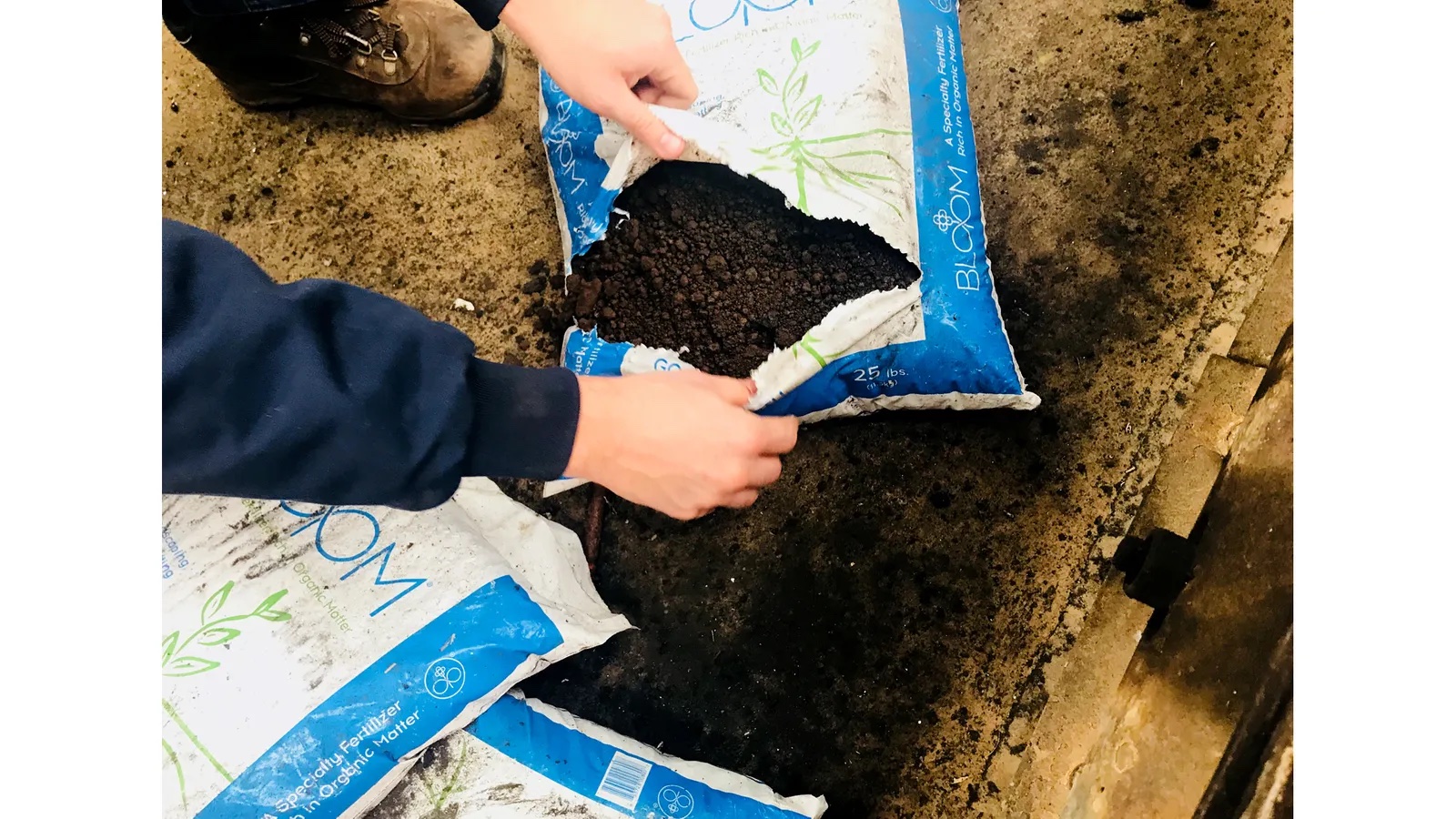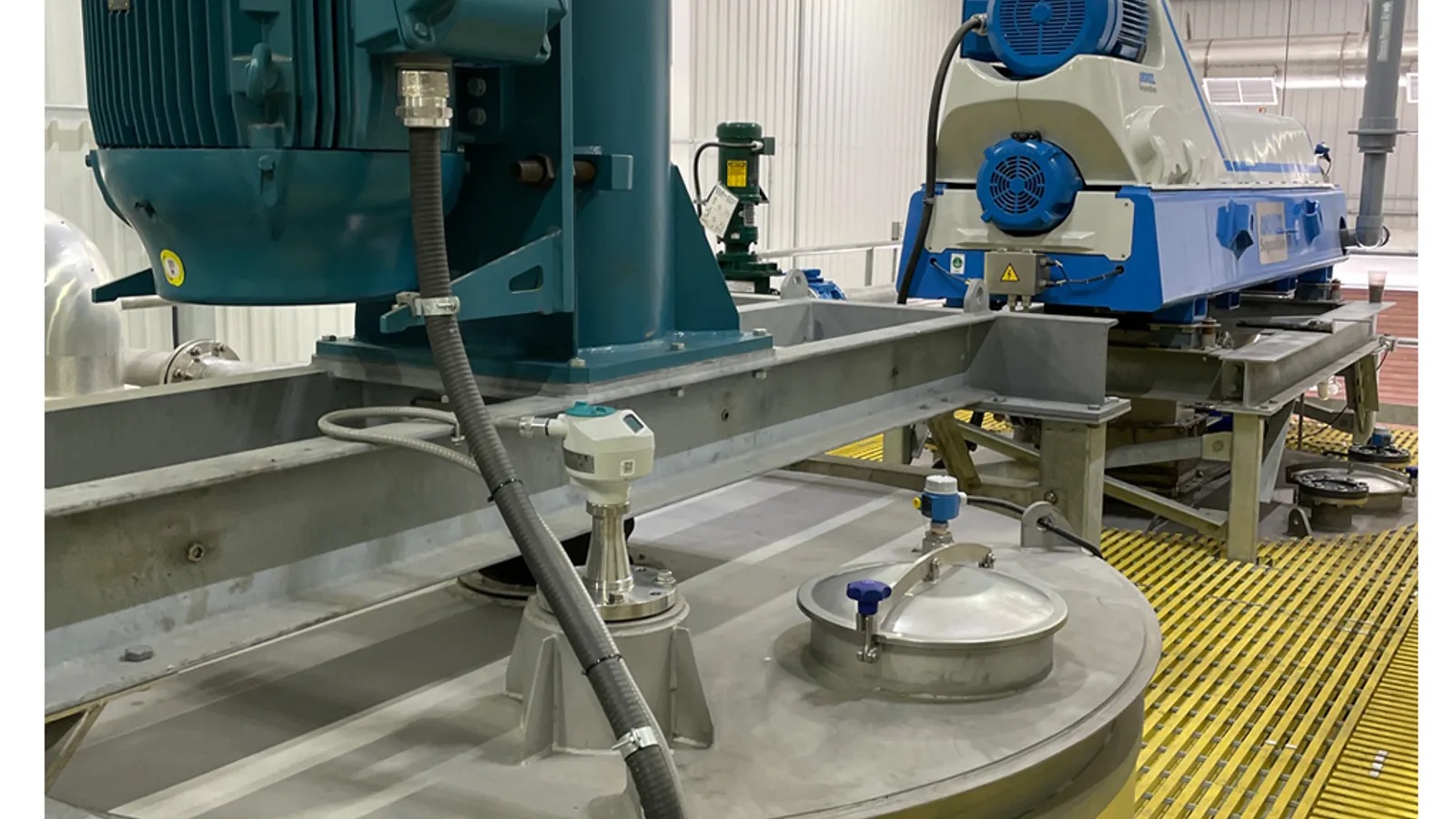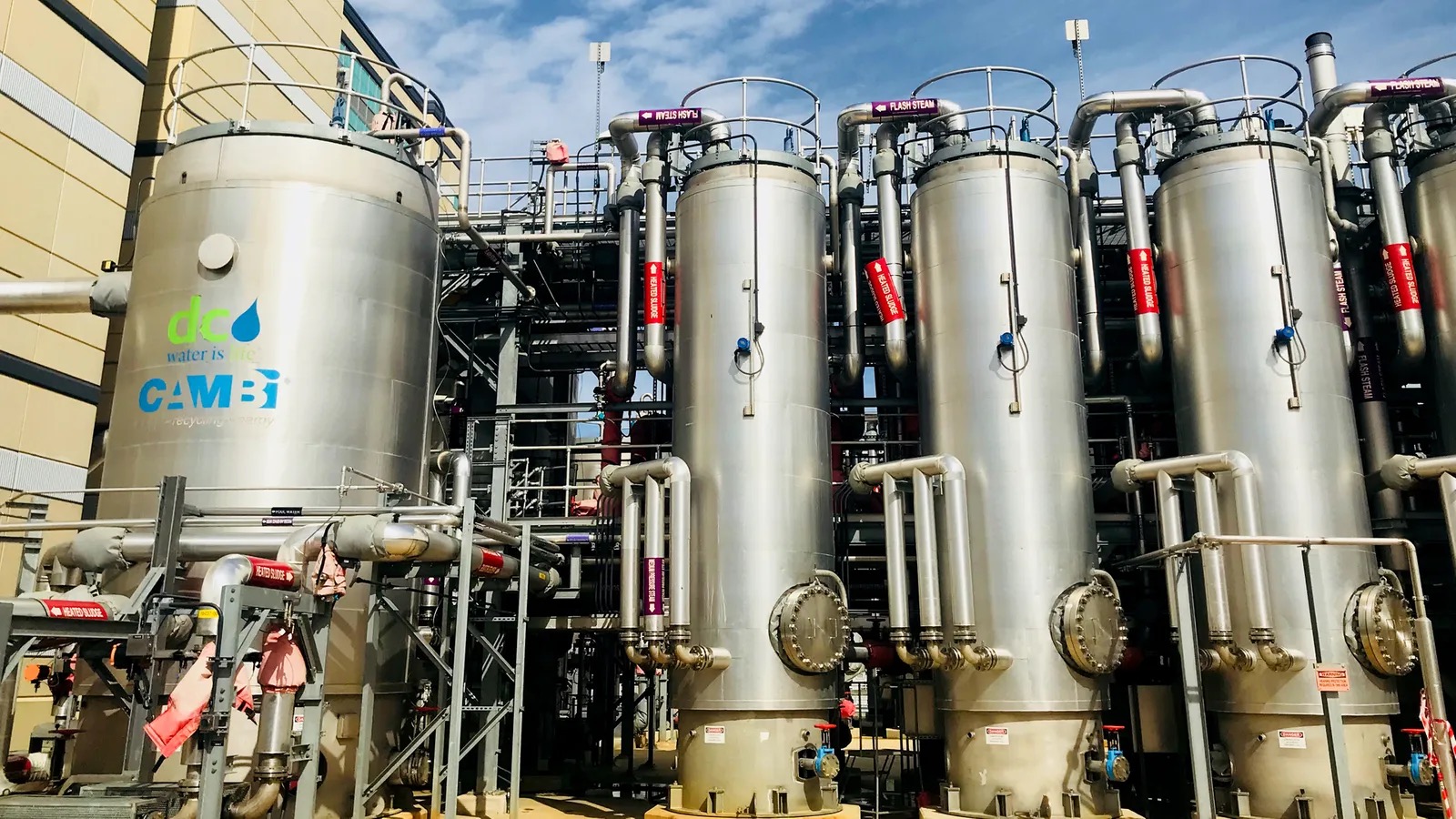I am sitting on a bio-toilet in Finca Gaia, an organic farm nestled in the midst of the tropical forest of Puerto Rico.
To my left, through the loose bamboo sticks of my stall, I can see lush avocado trees and tall plantains. Above me, the birds are chirping. Underneath me, unlike most toilets I use, there are no pipes and no maze of underground sewers.
With a smooth seat, soft toilet paper and the air smelling of blooming tulip trees, this set-up isn’t unlike my own New York City bathroom on the sensory level. But its inner workings are completely different from the typical Western loo. When I’m done, there’s no lever to pull. Instead, I open a box full of woodchips, dig in with a scoop and sprinkle them over what I left inside the big bucket tucked underneath the seat.
Manuel Perez, whose family owns the farm, built this bio-toilet for two reasons. Firstly, running pipes underneath this area would destroy a chunk of the jungle – Finca Gaia spans over about 35 acres (14 hectares) of natural forest, far away from municipal sewage lines.
“We humans have a complete misunderstanding of human waste” - Manuel Perez
Secondly, Perez firmly believes that what we view as human waste is a perfect product to nourish his plants and should be returned to the land. Once the bucket fills up, he adds its contents to a composting pit together with dead leaves and other refuse, all of which will eventually become rich and fertile soil.
“We humans have a complete misunderstanding of human waste,” he says. It’s a great fertiliser, full of nutrients. “So why waste it, when I can use it to grow my fruit trees?”
A faraway rainforest ranch seems a fitting place to compost poo, but these excrement-recycling ideas stretch far beyond. From farms to off-the-grid communities and from small eco-villages to big cities, there is a growing movement to put the metabolic output – more commonly referred to as excrement – of our bodies to good use, rather than simply trying our best to destroy it.
There are several reasons for that. Our poo is indeed a potent, nutrient-rich fertiliser which can help plants thrive. Composting rather than flushing it also brings down water use – a smart move in the era of climate change and water shortages. Applying it to land also reduces the need for synthetic fertilisers, which can wash away from fields into rivers and lakes and which require fossil fuels to make. (The Haber-Bosch process to synthesise the nitrogen-rich fertiliser ammonia requires temperatures of 400-650C (752-1,202F) and extremely high pressure, which can only be reached with the use of fossil fuels. The process leads to around 1.8% of global CO2 emissions.)

Manuel Perez built a composting toilet at his farm in Puerto Rico as he views human waste as a perfect product to nourish his plants (Credit: Lina Zeldovich)
Recycling excrement may sound unconventional and unhygienic, but it is increasingly being recognised as an important step in circular sanitation and economy – a process of treating and converting waste into a usable product.
“This topic is super-hot right now,” says Kelsey McWilliams, founder and managing director of Point of Shift, a Philadelphia-based company that designs circular sanitation systems. “People are realising that what we’re doing is unsustainable, so there’s a lot more interest in circular sanitation, specifically in the US, but other places too.”
When done correctly, it is a more holistic and sustainable way of dealing with the worldwide human waste problem. Because the stinky truth is that our planet indeed suffers from a human poo overload.
With seven billion of us dishing out a pound (450g) of it a day, our waste pollutes the environment in many different ways. In the developing world, which can often lack consistent industrial sanitation infrastructure, this often untreated sewage leeches into drinking water, causing diarrheal diseases that still kill half a million children a year.
When we continuously grow our food in some locations, but eat and excrete it in others, we end up redistributing the nutrients on the planet
But while we may think that we fixed the issue with our industrial treatment systems, they are problematic on another level. They help protect us from diseases like cholera and dysentery, but cause a different, global problem. When we continuously grow our food in some locations, but eat and excrete it in others, we end up redistributing the nutrients on the planet.
Here is what happens. As our grain, fruit and vegetables grow, they take nutrients – nitrogen, phosphorus, potassium – out of the land. When we eat that food, we absorb some of these elements, but not all. In fact, the human body needs a fairly small amount of them, so the rest ends up flowing down the pipe in our excreta – a potent trio of fertilisers.
Treatment plants clean any pathogenic bacteria from effluent before they release it into a body of water nearby, but don’t usually clear it from these nutrients (some of the more advanced utilities do have the technology to do this, however). As this fertiliser-rich effluent flows into lakes, rivers or the sea, it begins to fertilise all the wrong things, causing toxic algae blooms, which kill fish. It smothers coral reefs. It also destroys coastal marshes, ecosystems which normally act as sponges that absorb rising tides and protect us from storm surges – a problem particularly critical in the era of melting glaciers and sea level rise. Too much nitrogen causes marshes to overgrow so that they eventually turn into decaying mudflats.
“Over 30% of the world marshes are highly polluted with sewage and varying percentages of coral reefs are polluted also,” says Stephanie Wear, marine ecologist and founder of the Ocean Sewage Alliance, a nonprofit that aims to “re-potty-train the world” to clean the ocean from human waste. “And coral reefs are delicate ecosystems, so even small amounts are really bad for them.”

The fertiliser product Bloom is made from the output of sewage plants in Washington DC (Credit: Lina Zeldovich)
What happens with the remaining biosolid sludge is equally ugly. Sometimes it’s burned. Sometimes it’s dried and landfilled together with rubbish, where it rots, releasing greenhouse gases. Sometimes it’s accumulated in “lagoons”, a euphemism for massive cesspits which hold tonnes of waste, which are sometimes treated but can be simply left as is, covered to cut the stink and prevent wildlife or humans from accidentally falling in – not necessaraily environmentally damaging, but certainly wasteful.
Meanwhile farmlands become depleted after bearing crops year after year, so farmers have to buy and apply synthetic fertiliser, perpetuating the broken cycle of nutrients. Rather than returning these nutrients to land in a form of composted sewage we flush them into the sea, while making more synthetic fertiliser to mend our depleting farmlands. “If you look at how the system functions, it makes no sense,” says Wear. “We’re just flushing money down the toilet.”
To close the nutrient drift away from soils, humans need to find ways to redirect their sewage back to land, experts say. Not everyone has a farm on which to compost their body’s output, of course, but there’s a number of new technologies that can work in different settings and scales, from family homes to apartment buildings and big cities.
You might also like:
- Why Auckland is the ‘spongiest’ city
- All aboard Botswana’s Elephant Express
- The promise and danger of Scotland’s bog
McWilliams works with small-scale clients – eco-villages and campsites – in the US to design attractive toilets that convert waste into compost that can be used for fertilising trees or flower beds. She also works with clients in several Native American reservations where flush toilets are rare, and many houses use either latrines or cesspools. (Native Americans are 19 times more likely than white Americans to lack indoor plumbing).
“My clients want to replace the dismal Porta-Potties with something that doesn’t reek, isn’t full of flies and polluting chemicals, and can be returned to mother nature,” she says. Similarly to Perez’s approach, her designs rely on sawdust and agricultural leftovers to reduce smells and start the composting process.
Woodchips and sawdust won’t work in urban settings, but San Francisco-based Epic Cleantec tackles the problem at the level of the apartment buildings with smart technology. The residents’ wastewater doesn’t flow to a sewage plant but into the Epic Cleantec system, which separates solids from water, purifying the latter enough to be reused for watering plants, flushing toilets and even laundry (just not for drinking). The separated biosolids are compacted in drums inside the special odour-controlled cabinets and later undergo a heat and oxidation treatment which kills pathogens.
I look at this as an opportunity to have the ultimate recycling system – Stephanie Wear
One benefit of the system is that it is much easier to decontaminate sludge before pathogens multiply out of control on its way to the plant, explains chief executive and founder Aaron Tartakovsky. “Usually, solids swirl around the sewer for hours or days, so you have an extremely high pathogen count,” he says. “We capture them seconds after someone flushes the toilet, so we have a fraction of pathogens compared to wastewater treatment plants.”
The end result is a dry, odour-free, carbon and nitrogen-rich soil product. So far, Epic Cleantec has only used that “humanure” in a small R&D greenhouse to better understand its soil properties, but the firm hopes to use it in parks soon. “We are speaking with the city’s park department about using it in parks for a pilot project,” Tartakovsky says. “We call it ‘Soil by San Franciscans for San Franciscans’.”

Lystek’s South Huron Valley site in Michigan produces Class A biosolids for local agricultural use (Credit: Lystek)
At the municipal level, the Canadian company Lystek, has forged a solution intended to work at scale. Lystek has built a massive sewage blender with a blade so sharp that it slices all the sewage microorganisms into shreds, leaving regulated pathogen such as E.coli and Salmonella below regulated detection limits. The resulting slush is loaded into trucks that inject it into soil on farm fields that grow grass to feed cows.
Founder Ajay Singh, a scientist at the University of Waterloo in Ontario, developed the process after he learned that most of his town’s waste was trucked away to remote places.
“These gasoline-powered trucks were essentially transporting water, because water constitutes 98% of liquid waste,” he says. “I wanted a better use for all these resources. So we made what we call a sewage smoothie.”
The tech is already used in multiple cities in Canada, the US and the Middle East, servicing a population of approximately 1,700,000 people, according to the company.
We consider biosolids to be really multivitamins for the soil – Lynne Moss
Another company, DC Water, a sewage plant in Washington DC processes the “output” of the entire US capital. It renders sewage harmless of all pathogens by simmering it at 300F (148C) and compressing it to six times atmospheric pressure. The cooked sludge is pumped into biodigester tanks in which various bacteria eat through it for several weeks, converting it into a muddy goo. The goo is then dried out for three weeks until it reaches the consistency of potting soil, becoming a fertiliser product named Bloom, sold by the nonprofit BlueDrop.
Farmers buy the lion’s share of Bloom, but purchasers also includelandscapers and construction companies who need topsoil. These wholesale customers typically buy by the truckload, but Bloom is also available in retail stores packaged into 25lb and 50lb (11kg and 22kg) bags for home gardeners.
Golf courses like Bloom too because it’s high in iron, which gives the grass a dark, rich shade of green, says April Thompson, director of marketing and sales at BlueDrop.
“This March we had record sales, we sold more at this stage of 2022 than we did in the entire year of 2020,” she says. “We already sold 44,000 tons [about 40,000 metric tonnes]. We had farms knocking at our door because the fertiliser prices went up and because we are getting a lot of word of mouth.” In spring – prime fertiliser season – the demand was so high that Bloom was completely sold out and farmers were waiting for the DC residents to make more.
There are reasons why farmers, particularly the organic ones, value humanure. Biosolids aren’t only high in the essential trio of fertilisers, nitrogen, potassium and phosphorus. They contain other nutrients plants need for health and growth, such as magnesium and sodium, and help plants accumulate these nutrients.
“We consider biosolids to be really multivitamins for the soil,” explains Lynne Moss, a biosolids specialist at Black & Veatch, an engineering firm. “They naturally contain iron and zinc, which plants need, and which farmers have to otherwise add to the soil. When you apply biosolids to land, you are getting all these other nutrients too.”

DC Water processes the “output” of the city of Washington DC, which is turned into a fertiliser product named Bloom (Credit: Lina Zeldovich)
Adding humanure also changes soil structure, making it more resilient, preventing erosion and balancing out moisture, says Moss. It makes dirt fluffier, so water passes through easier. Conversely, in drought conditions, this also helps it retain water. The less compact soils are also softer, enabling seedlings to take faster and grow stronger roots, producing better yields.
“The key issue we face today in the US and elsewhere is that organic matter has been depleted through some of our farming practices,” says Moss. “Adding biosolids can restore that organic matter, which brings all kinds of benefits.” One recent study found that applying biosolids can replace synthetic fertiliser use in infertile tropical soils.
Another challenge is the still-remaining taboo around the topic – many people just don't love talking about sewage
All this means that closing the drift of nutrients to waste and restoring circular agriculture can solve a whole host of problems at once. It diverts pollution from the ocean, while also helping to rebuild our soils and reduce synthetic fertiliser use.
Why hasn’t every building and municipality switched to such smart tech? One barrier is money – sustainable technologies (especially new ones) require funding, and municipalities, which rely on taxpayer dollars, have limited budgets.
Another challenge is the still-remaining taboo around the topic – many people just don’t love talking about sewage. And there are some environmental challenges too. For example, to be applied to land in the US, sludge must be what the US Environmental Protection Agency calls “Class A quality”. That means they must be free or contain only insignificant amounts of various pollutants, including heavy metals, pharmaceuticals or harmful “forever chemicals“. Wastewater plants that treat effluent from industry factories therefore may not produce sludge that’s clean enough. Yet, novel technologies may help solve these problems.
Ultimately, the emerging technologies to recycle human waste can help us restore a more circular agriculture which our modern ways of life have lost.
“I look at this as an opportunity to have the ultimate recycling system,” Wear says. “You eat the food, you excrete the food and then you capture the resources from that excretion – and use it to grow food again. “We don’t have the infinite resources on this planet, so we have to start recovering and reusing them.”
By Lina Zeldovich
Main source to this article: https://www.bbc.com/future/article/20220830-the-new-science-of-recycling-human-poo



